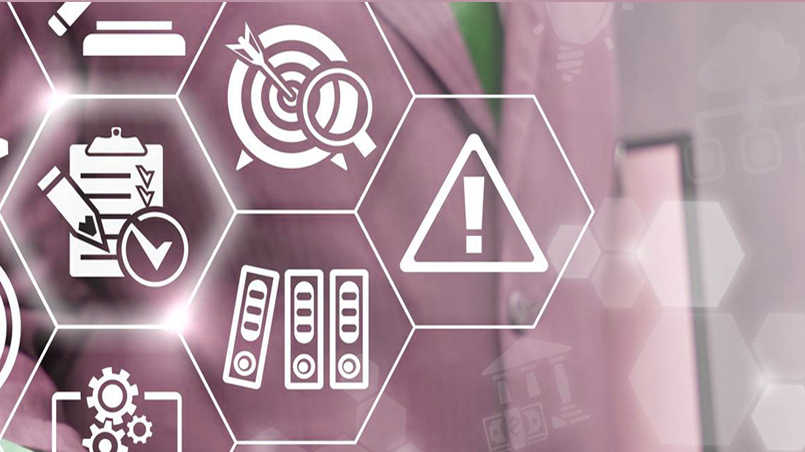 Payment
Payment
 Connect Us
Connect Us

 Mar 06, 2023
Mar 06, 2023
We are in a world of radical transparency where transgressions stand out. Shareholder primacy is contested by an increasing awareness of an organization’s responsibility to all its stakeholders. Shifting values, stakeholder prioritization, and alignment matter deeply. Leadership teams must integrate these values in the context of potentially irreversible exponential technologies, AI, and climate change. Listed companies need anticipatory governance to thrive in multi-stakeholder and unpredictable environments. Deep uncertainties raise challenges, but also opportunities. The cost of preparation pales in comparison with the costs of lacking anticipation.
Our Best Un-Vice for Anticipatory Governance
What is effective governance in our Unknown, Volatile, Intersecting, Complex, and Exponential (UN-VICE) world? What is impactful leadership in a radically transparent environment where disruption is a constant?
Our best “UN-VICE” (in contrast to ad-vice) is to prioritize resilient and anticipatory governance in our systemic, uncertain, and complex environments.
The world’s increasing lack of predictability is evident in every aspect of life today, including the Covid pandemic, emerging technologies which disrupt incumbents, or the knock-on effects of geopolitical change (e.g. Russia’s invasion exacerbating inflation, cybersecurity risks, and the food and energy crises). Deep uncertainty means we often lack visibility of the events that may happen, let alone their likelihood. There is an increasing cost of assuming a predictable world given the inverse relationship between predictability and uncertainty.
Our world is deeply uncertain. We need anticipatory governance to become adaptive and emergent, rather than relying on traditional planning and risk management.Anticipatory governance (ex-ante) contrasts reactive governance (ex post). In anticipatory governance, we use foresight to design governance and incentive systems in advance, accounting for many possible outcomes.
Reframing Preparation & Assumptions for Open Futures
Disruption today is no longer an isolated event but a steady-state. The degree of disruption’s surprise correlates to the reliance on assumptions that our world is predictable. The more anticipatory our mindset, the deeper our critical thinking, and diverse our perspectives, the less astonishment we experience from accelerating change.
We do not seek a predetermined playbook nor assume a specific outcome. Foresight is the capacity to explore possible futures systemically to inform short-term decision-making.We ask questions, challenge views, and broaden possibilities.
For questions focused on the futures, there is no data. Insights from historical data and trends are helpful for making sense, but only because they show the existing world to start exploring from (not the finality). Our imagination helps build many different scenarios. Some of these are plausible; others may be preferable; we also integrate outliers. These outliers such as the Black Swans (unpredictable, rare, high-impact events) and Butterfly Effects (small cause having outsized effects), are still possible
Foresight builds on strategic planning, but the fundamental departure is the recognition that: the futures differ from the past; longer timeframes matter; and unpredictability needs to be captured. Scenarios can help solve problems differently as they imagine a new world. Foresight, with scenario planning, allows a multiplicity of possible outcomes without relying on assumptions, extrapolations, or dependence on a singular outcome.
The purpose of anticipatory governance through scenario development is preparation, not prediction. The value in thoughtful scenario development is to enhance mental flexibility for extreme (but plausible) changes, while rewiring how our systems are programmed. We build comfort with changing environments, which can represent major departures from the world we are accustomed to.
As we evaluate the opportunities and risks of developed scenarios, we scrutinize their potential consequences. This allows us to build resilience and the capacity to sustain even the most serious impacts.
Our decision-makers mandate consultants to restructure, optimize, and find every possible cost savings. Simultaneously, the greatest cost of all is ignored: the cost of assumptions, which is going through the roof.
Many “cost savings” actually make our organizations more fragile (e.g. “optimizing” supply chains), which drives costs higher over time. Reimagining assumptions offers more effective cost savings than skimping on food subsidies, employee benefits, or post-it notes.
Proactively developing our capacity for anticipatory governance includes:
Practical Approach to the Six Degrees of (Un)Predictability
In relation to relying on assumptions, appreciating broader systems, and understanding stakeholder incentives, we outline an anticipatory governance approach to the “Six Degrees of (Un)Predictability”:
All these degrees of uncertainty can result in high impact events. They also share the one common trait that ignorance, or absence of evidence, is not evidence of absence. Being anticipatory allows us to be better prepared for any future eventualities.
Many seemingly insignificant changes can lead to vastly amplified outcomes. In our complex world, there are a multitude of cause-and-effect relationships which can’t be identified or understood. A single triggering phenomenon can generate an avalanche of disproportionate and seemingly disparate impacts.
Disruption 3.0 Changes Rules and Opens New Opportunities
While the costs of assuming a stable world are increasing, disruption creates space for novelty and sustainable value creation.
There have been two notable implementations of disruption that have received particular attention:
While these describe many of the past decades’ disruptions, they are two discrete types of disruption. Looking forward, disruption is disrupting itself. Systemic disruption imposes limitations to relying on legacy governance structures.
In the new era we define as Disruption 3.0, disruption is omnipresent. It is a constant which establishes entirely new paradigms, which themselves will evolve. The drivers of disruption are interconnected like a network. These changes are systemic, representing a large-scale, multidimensional family of disruptions. Their collisions reinforce the already inherent complexities, paradoxes, and pluralism of today’s perspectives, problems, and responses.
Together, this environment conjures a new type of systemic disruption, which we label Disruption 3.0.
Disruption 3.0 compounds systemic disruptive effects. As complex environments are hyper-connected, hazards and opportunities interact multiplicatively
Anticipatory Governance for AI &Amp; Technology
The challenge with anticipatory governance systems, especially for technology, is to get the initial conditions right. While premature policies or regulations could stifle innovation, technology and AI have a special status for effective governance:
By exercising anticipatory governance, we seek to anticipate the next-order implications for any change, innovation, or technology, the unexpected consequences, and how we could better deliver sustainable value creation.
There are four primary steps leadership teams can take to ensure that AI develops ethically. First, approach AI with critical thinking and constant questioning. Second, work with multidisciplinary actors, as ethical questions span a diverse set of realms, from psychology to public policy. Third, offer ethics education programs that teach the benefits, risks, and broader societal considerations in domains where AI systems make decisions that directly impact humans. AI ethics training is essential, from schools to boardrooms. Fourth, prioritize transparent disclosure and debate, with effective incentivization.
To be effective, these four steps need feedback loops that allow anticipation, monitoring, and mitigation of how AI systems may evolve. At the outset, we must thoroughly consider the implications of their development. This should be supported by day-to-day monitoring, with regular independent review and accountability to drive remedies where needed. The better the monitoring, the greater the scope of mitigation as new elements emerge and implications materialize.
Organizational Resilience &Amp; Existential Risk Management
Anticipatory governance within our Disruption 3.0 environment turns the focus to organizational resilience. Businesses can no longer ignore significant cybersecurity and infrastructure risks (e.g. energy, internet, telecommunications, data center protection), as well as spillover from geopolitical tensions, and even space risks (e.g. satellites and communications infrastructure). Prolonged breakdowns of our networks are conceivable, and bad actors regularly test our systems’ limits. Existential risk management plans should become a new focus.
The cost of being prepared pales in comparison with the reputational, financial, and human costs of lacking anticipation.
Enter the Chief Existential Officer (CEO2)
Given these extreme risks, organizations may need a Chief Existential Officer (CEO2). While a Chief Risk Officer focuses primarily on conventional regulatory, compliance, and technology risks, the CEO2 is responsible for acting upon the increasing number of low-probability but high-consequence existential risks, the accompanying opportunities (‘Greenaissance’, investment in social justice, and innovation), as well as synergizing with government ecosystems.
Acknowledging Transparency & Traceability for Anticipatory Governance
Societal paradigm shifts are commensurate with the transparency of information, which is out in the open for scrutiny.When considering our radically transparent and traceable world, anticipatory leadership teams can follow these six concepts:
We are in a world of radical transparency, traceability, and accountability where changing expectations drives new values. Those who don’t anticipate the impacts of these new values may be forced to.

He is President of Techistential (Global Foresight Strategy) and Chairman of the Disruptive Futures Institute in San Francisco. Roger has two decades of leading investment banking and venture capital businesses, advising CEOs, founders, boards, and shareholders, evaluating their competitiveness, strategic investments, and disruptions ahead. He sits on a number of Advisory Boards of Companies, Climate Councils, VC funds, and Academic institutions worldwide. Roger is the lead author of ‘The Definitive Guide to Thriving on Disruption’ from which this article is adapted.
Owned by: Institute of Directors, India
Disclaimer: The opinions expressed in the articles/ stories are the personal opinions of the author. IOD/ Editor is not responsible for the accuracy, completeness, suitability, or validity of any information in those articles. The information, facts or opinions expressed in the articles/ speeches do not reflect the views of IOD/ Editor and IOD/ Editor does not assume any responsibility or liability for the same.
About Publisher

Bringing a Silent Revolution through the Boardroom
Institute of Directors (IOD) is an apex national association of Corporate Directors under the India's 'Societies Registration Act XXI of 1860'. Currently it is associated with over 30,000 senior executives from Govt, PSU and Private organizations of India and abroad.
View All BlogsMasterclass for Directors
Categories